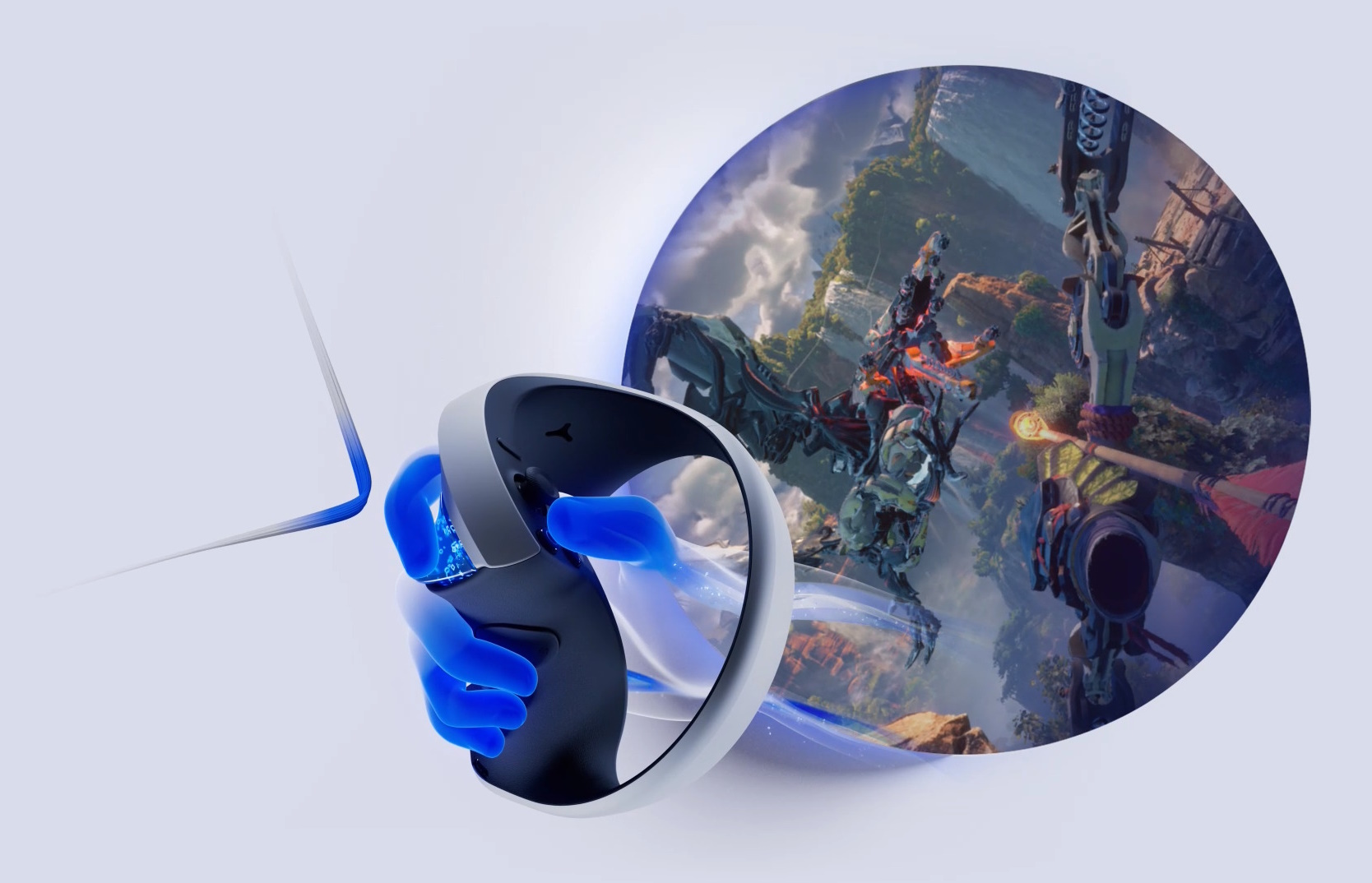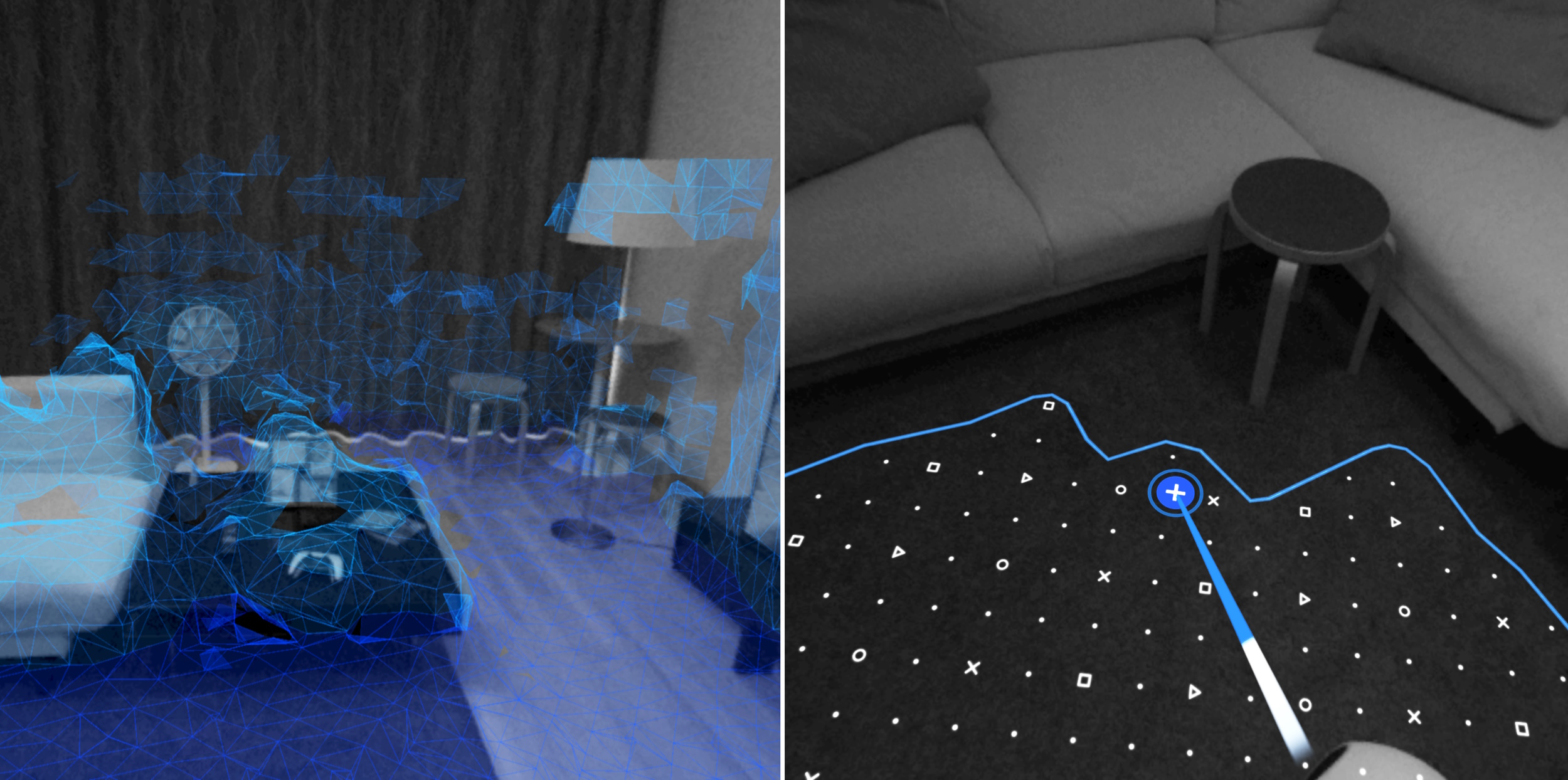The PlayStation VR2: A Step Forward, But Still a Niche Experience
Table of Contents
- The PlayStation VR2: A Step Forward, But Still a Niche Experience
- Building on Legacy
- Hardware Excellence
- Content Remains King
- The VR Experience: A Compromise
- A Decade of Potential
- Aesthetics and Ease of Use
- Automated Play Space Setup
- A World Built Around You
- Setting Up Your Virtual Playground
- Navigating the Virtual Landscape
- A Visual Feast
- Pushing the Boundaries
- The Quest for Visual Fidelity in VR: A Critical Look
- The Trade-Off Between Resolution and Immersion
- The “Screen Door Effect” and its Impact
- Beyond Resolution: The Importance of Other Visual Factors
- The Future of VR Visuals
- The PSVR2: A Step Forward, But Is It Worth It?
- A Refined Experience, But Still a Niche Market
- Potential vs. Reality: Where Does VR Stand Today?
- Looking Ahead: The Future of VR Gaming
The PlayStation VR2 is a fascinating paradox in the world of virtual reality. It’s undeniably impressive in terms of hardware specifications, ease of setup, and comfort. Sony has clearly poured resources into creating a premium VR experience. However, despite these advancements, it still grapples with the fundamental challenges that have kept VR from achieving mainstream adoption: a lack of truly compelling content and persistent issues with visual fidelity.
Building on Legacy
The original PSVR was a pioneering device, making VR accessible to a wider audience. While its technology felt dated compared to modern standards, it demonstrated the potential of VR gaming and Sony’s commitment to user-friendliness. The announcement of the PSVR2 last year generated significant excitement, as its specifications promised to push the boundaries of what was possible.
Hardware Excellence
The PSVR2 boasts a 4K OLED display with a refresh rate of 120Hz, inside-out tracking for seamless room-scale experiences, and refined controllers that build upon previous designs. Priced at $550, it strikes a balance between entry-level headsets like the Oculus Quest 2 and high-end PC VR systems like the Vive Pro 2. The PSVR2’s single cable design simplifies setup and enhances immersion.
Content Remains King
Despite its impressive hardware, the PSVR2 faces a crucial hurdle: content. While launch titles include intriguing offerings like a Horizon: Zero Dawn spin-off and a Resident Evil installment, the overall library still lacks the breadth and depth to truly justify the investment for casual gamers. The lack of compelling experiences is a recurring issue in VR gaming, hindering its mainstream appeal.
The VR Experience: A Compromise
Even with technological advancements, VR gaming remains a compromise. The experience can be magical, but it’s inherently artificial and often physically demanding. Wearing the headset for extended periods can lead to discomfort, fatigue, and even motion sickness. While Sony has made strides in refining the hardware, the fundamental nature of VR as an immersive technology still presents challenges.

While some might label me a cynic, I genuinely want VR to succeed. Back when I first tried that duct-taped Oculus prototype years ago, I instantly saw its potential. Now, a decade later, we’re seeing glimpses of that promise fulfilled—but not enough to convince me to recommend spending six monthly payments on it just yet. There’s still a long way to go before VR reaches mainstream adoption.
However, dismissing a well-designed VR headset solely because it exists within an evolving ecosystem wouldn’t be fair. Let’s delve into what the PSVR2 does right.
Aesthetics and Ease of Use
First impressions matter, and the PSVR2 delivers. It boasts a sleek design that feels surprisingly lightweight and doesn’t take up much space when not in use. The controllers, while initially appearing somewhat perplexing with their unique shape, ultimately make sense after some experimentation. The entire setup exudes a sense of thoughtful design and quality construction.
Setting it up is a breeze—the simplest VR setup I’ve encountered. Plug the headset into your PS5’s USB-C port, and you’ll be guided through a step-by-step tutorial covering everything from adjusting the fit to understanding button functions and syncing the controllers (simply press the PS button on them).
Automated Play Space Setup

Automated scanning and customization of the play space. Picture Credit: Sony
Establishing your play space is a breeze thanks to automated scanning using the headset’s passthrough view.
The PSVR2: A Leap Forward in VR Immersion
Sony’s latest foray into virtual reality, the PSVR2, promises a truly immersive experience. From its sleek design to its cutting-edge technology, it aims to redefine what’s possible in gaming and entertainment. But does it live up to the hype? Let’s dive into the details.
A World Built Around You
One of the most striking features of the PSVR2 is its “passthrough” mode, a black-and-white real-time view of your surroundings. This innovative feature allows you to seamlessly transition between the virtual world and reality, adding a layer of depth and immersion that’s truly unique. Imagine being able to adjust your play space by simply zapping it with a beam from your controller – it’s surprisingly intuitive and enjoyable.
Setting Up Your Virtual Playground
Getting started with the PSVR2 is a breeze. The built-in gaze detection system is incredibly user-friendly, requiring only a quick calibration process. Simply follow the on-screen instructions and watch the dot – within seconds, you’re ready to dive into the virtual world. While the gaze tracking worked well for general interactions, I did encounter some challenges with precision aiming in games like Rez:Infinite. Despite repeated adjustments, my crosshair consistently appeared slightly off-center. However, the responsiveness and accuracy of the system were otherwise impressive.
When you enter a game, you’ll be presented with familiar choices regarding motion controls – gestures or analog sticks. Initially, I opted for gestures, but after experiencing the “forward” movement in Horizon: Name of the Mountain (holding down buttons on both controllers and pumping your fists), I quickly switched to the sticks. While motion control in VR remains a complex challenge, the PSVR2’s controllers offer a surprisingly natural feel.
(While my space limitations prevented a full-scale room-scale experience, the tracking system appeared accurate and responsive during the brief moments I tested it.)

PSVR2’s controllers, looking like pretzels. Picture Credit: Sony
The PSVR2’s controllers are truly remarkable. Despite their unconventional appearance, the accuracy and responsiveness are exceptional. The fast feedback and smooth rotation create a sense of realism that quickly fools your mind. Climbing in Horizon: Name of the Mountain becomes an exhilarating experience, transforming awkward movements into something natural and enjoyable.
A Visual Feast
The PSVR2 boasts a stunning display with vibrant colors, deep blacks, and impressive clarity thanks to its OLED panel. The smooth 120Hz refresh rate ensures buttery-smooth visuals, while the wide 110-degree field of view significantly reduces tunnel vision compared to other headsets. However, the vignetting effect remains noticeable and can sometimes be distracting.
Pushing the Boundaries
Even with its impressive 4K resolution and 120Hz refresh rate, the PSVR2 faces inherent limitations due to the close proximity of your eyes to the display and the complex Fresnel lens system. These factors can occasionally lead to artifacts and visual distortions.
The Quest for Visual Fidelity in VR: A Critical Look
Virtual Reality (VR) has come a long way, offering immersive experiences that transport us to fantastical worlds and beyond. However, the quest for truly convincing visuals remains an ongoing challenge. While advancements in display technology have significantly improved image quality, certain limitations persist, particularly when it comes to sharpness and clarity.
The Trade-Off Between Resolution and Immersion
One of the key factors influencing VR visuals is resolution. While 2K per eye offers a substantial improvement over previous generations, achieving true visual fidelity requires even higher resolutions. This trade-off between resolution and immersion is a complex one. Increasing resolution demands more processing power, potentially impacting frame rates and overall performance.
For instance, in fast-paced action games or simulations requiring precise movements, maintaining smooth frame rates takes precedence over achieving ultra-high resolution. Conversely, in slower-paced experiences like exploration or narrative-driven games, higher resolutions can enhance the sense of presence and immersion.
The “Screen Door Effect” and its Impact
Despite advancements in display technology, the “screen door effect” remains a noticeable issue for some VR headsets. This phenomenon refers to the visible grid pattern created by individual pixels on the display, which can detract from the sense of immersion.
While this effect is less pronounced with higher resolutions, it’s still present in many current VR headsets. This limitation becomes particularly apparent when viewing static scenes or focusing on fine details. For example, reading text or observing intricate textures might reveal the pixelated nature of the display.
Beyond Resolution: The Importance of Other Visual Factors
Achieving truly convincing visuals in VR goes beyond simply increasing resolution. Other factors such as color accuracy, contrast ratio, and field of view (FOV) also play a crucial role. A wider FOV can create a more immersive experience by mimicking the natural human field of vision.
Furthermore, advancements in rendering techniques and post-processing effects can significantly enhance the visual fidelity of VR experiences. Techniques like ambient occlusion, global illumination, and depth of field can add realism and depth to virtual environments.
The Future of VR Visuals
The quest for visually stunning VR experiences continues. As display technology evolves and processing power increases, we can expect significant advancements in resolution, clarity, and overall visual fidelity.
Researchers are exploring new display technologies such as micro-LED and OLED, which offer higher resolutions, wider color gamuts, and improved contrast ratios. Furthermore, advancements in artificial intelligence (AI) and machine learning are enabling more sophisticated rendering techniques that can create incredibly realistic virtual worlds.
The future of VR visuals is bright, promising immersive experiences that blur the lines between reality and virtuality.
The PSVR2: A Step Forward, But Is It Worth It?

The PlayStation VR2 has arrived, boasting impressive advancements in technology and user experience compared to its predecessor. While the headset itself is undeniably sleek and intuitive, with controllers that feel remarkably natural, the question remains: is it truly worth the investment for the average gamer?
A Refined Experience, But Still a Niche Market
The PSVR2 excels at delivering a smoother, more immersive VR experience. Eye-tracking and foveated rendering technologies aim to alleviate common issues like eye strain and motion sickness, though they haven’t entirely eradicated these concerns. After several hours of gameplay, I personally experienced some eye fatigue and a lingering sense of optical distortion.
Despite the technological strides, the core issue remains: are VR games truly worth the price tag? While dedicated fans of franchises like Horizon or Resident Evil might find themselves drawn to the PSVR2, it’s unlikely to convert casual gamers who haven’t already embraced VR. The current library of titles feels more like a showcase for the technology than a compelling reason to invest in the platform.
Potential vs. Reality: Where Does VR Stand Today?
Games that truly leverage the potential of VR still feel somewhat nascent, hinting at what’s possible but not fully realizing it. Titles like Rez with its innovative eye controls and cover shooters demonstrate the benefits of VR immersion, but they remain exceptions rather than the rule. Traditional games like Elden Ring or Resident Evil Village offer equally compelling experiences on a standard TV setup.
The PSVR2 represents a significant step forward in VR technology, making the experience more accessible and enjoyable. However, until we see truly groundbreaking VR titles that redefine gaming as we know it, the platform will likely remain a niche market for enthusiasts rather than a mainstream phenomenon.
Looking Ahead: The Future of VR Gaming
The potential of VR is undeniable, but it needs killer apps to truly capture the imagination of gamers worldwide. I eagerly anticipate the next generation of VR experiences that push the boundaries of immersion and gameplay. Until then, the PSVR2 stands as a testament to technological progress, but its value proposition remains debatable for the average gamer.
For more on the latest gaming trends, check out our Gaming News section.


